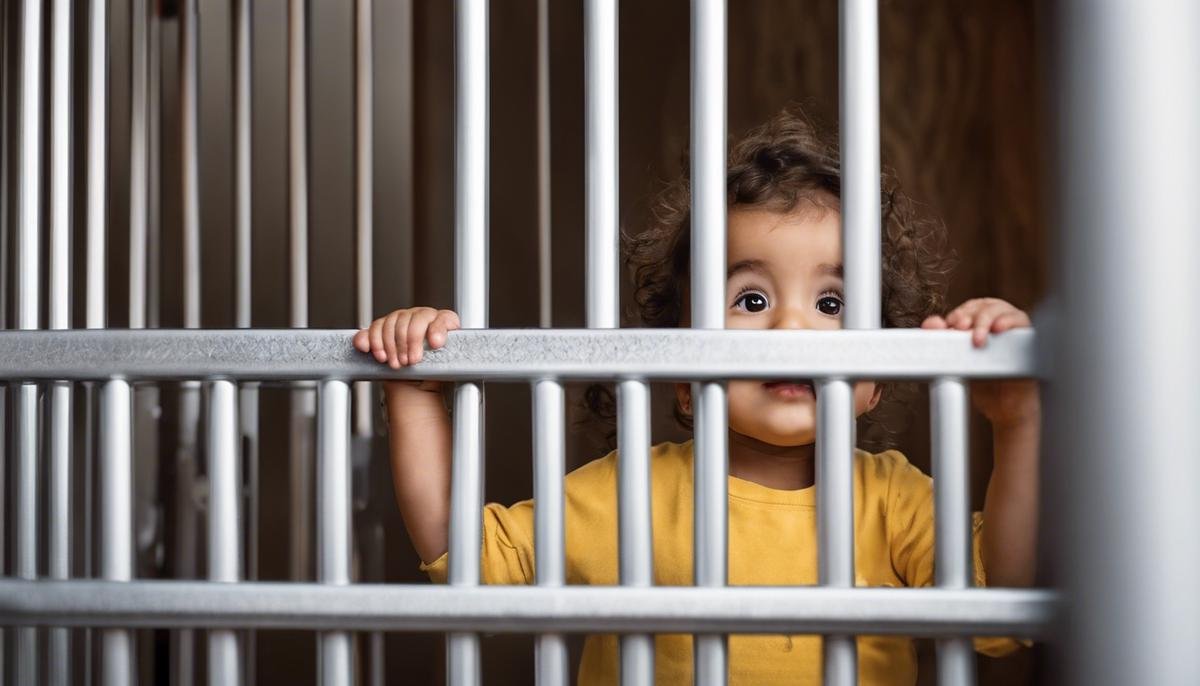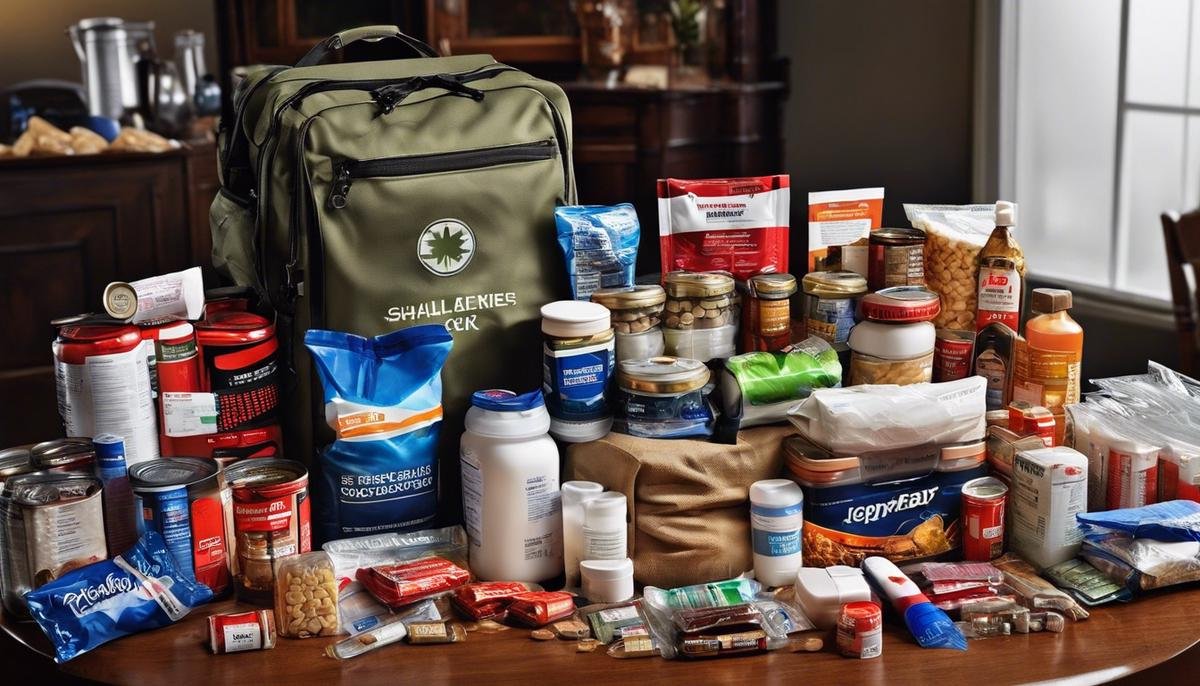
Safety is a universal priority, particularly when considering the unique challenges faced by individuals with autism. The autism spectrum is broad, encompassing a diverse range of abilities and sensitivities that inevitably influence how one perceives and interacts with the world. As caretakers, educators, and community members, it’s critical to acquire a keen understanding of these variations to effectively manage and mitigate safety concerns. From sensory overloads that could lead to distress, to communication barriers that might impede emergency responses, this essay endeavors to explore the multifaceted nature of autism in the context of safety, providing practical guidance for ensuring the well-being of those on the spectrum during both everyday scenarios and unforeseen crises.
Understanding Autism and Safety Concerns
Navigating the Waters of Safety for Kids with Autism
Hey, wonderful community of devoted caregivers,
When it comes to keeping our little ones safe, parents and guardians of children with autism face a distinctive set of challenges that make ‘safety’ much more than a checklist item. It’s a journey unique to every family touched by autism, but it’s a path we walk with unwavering love and dedication.
Understanding the Nature of Autism
Autism spectrum disorder (ASD) affects communication and behavior, with a range that varies in individuals. This can sometimes result in a lack of awareness of danger or difficulty in understanding safety instructions. It’s about getting into the nitty-gritty of our kiddos’ perceptions and experiences of the world around them – a world that may not always be tailored to their needs.
Wandering and Elopement Risks
Children with autism have a higher propensity for wandering or elopement — that heart-dropping moment when a child may stray away unsupervised. The outside world, while brimming with wonders, is not without its hazards, from traffic to bodies of water. Ensuring a safe space often means extra layers of security, such as specialized locks, alarms, and even tracking devices.
Sensory Sensitivity and Overstimulation
Sensory processing challenges are common among children with autism. Loud noises, bright lights, or unfamiliar environments may trigger anxiety, confusion, or distress, which introduces layers of complexity to safety planning. Imagine the cacophony of a fire alarm through the ears of a child in sensory overload – it’s a setting that requires patience, understanding, and sometimes a different approach to safety drills and routines.
Communication Barriers
Children on the spectrum may have difficulty communicating their needs, discomforts, or understanding instructions — a challenge that amplifies in emergencies. Adapting communication tactics, such as using visual aids or socially stories, can bridge this gap and create a mutual understanding of what is safe and what isn’t.
Teaching Safety Skills
Traditional safety rules that many take for granted can be more difficult for children with autism to grasp. Creative and repetitive teaching methods, tailored for visual or tactile learners, become invaluable toolkits for instilling safety awareness. It’s about presenting safety skills in a way that aligns with each child’s learning preferences.
Emergency Services Preparation
Our hearts yearn for communities and first responders to be clued into the needs of individuals with autism. Providing a heads-up to local police and fire departments about a child with autism can make a significant difference in how situations are navigated. Many communities now offer special training for emergency personnel to accommodate the unique needs of individuals on the spectrum.
Building a Supportive Community
Keeping our kids safe truly takes a village. From family members to teachers, neighbors to fellow parents — it’s crucial to have a compassionate network that appreciates the specific safety concerns for children with autism and is ready to step up when needed. After all, understanding and collaboration are at the heart of making safe spaces accessible for everyone.
Every Step Matters
Safety may come with a unique set of obstacles for kids with autism, but every challenge is an opportunity to teach, learn, and grow – both for our children and for us as caregivers. Whether we’re creating home safety zones, developing personalized communication strategies, or fostering relationships with community helpers, every step taken is a stride towards security, understanding, and inclusivity.
Here in this shared space of nurturing and resilience, let’s continue to band together, share experiences, and offer support to ensure that our extraordinary children navigate a world that is as safe as it is vibrant for them. They deserve that much and more.
Let’s keep this important conversation going – because when it comes to safety, every tip shared and lesson learned could make all the difference.
Warmly,
Your fellow parenting advocate

Preventative Measures for Safety
Babyproofing Your Environment: A Parent’s Guide to Unwavering Vigilance
Hello, parents and guardians!
Ensuring our little ones are safe at home and in public is a top priority for all of us. While we’ve tackled understanding autism, wandering risks, sensory challenges, and more, let’s dive into some proactive steps we can take to babyproof our surroundings and keep those crises at bay.
First off, take a look around your living space. Are cabinets and drawers secured? Childproof latches are a must to prevent access to harmful substances and sharp objects. Don’t forget to anchor heavy furniture and electronics to the wall to avoid tip-over accidents. Those television straps and furniture anchors might not be the most aesthetically pleasing, but they do offer peace of mind.
Now, let’s focus on keeping those harmful cleaners and medicines out of reach. High shelves or locked cabinets ought to be your go-to. And while we’re discussing potential household hazards, make sure small items that pose choking risks are nowhere within your child’s grasp.
Safety gates are lifesavers, quite literally! Position them strategically around your home to create safe zones, particularly near stairs or rooms with potential dangers. Having these barriers can prevent falls and buy you precious seconds needed to avert a crisis.
When it comes to the great outdoors or public spaces, always harness the power of visibility. Dress your kids in bright colors to quickly spot them in a crowd. Consider using a child leash in busy areas if your little one tends to dart off — remember, safety over judgement!
It’s crucial to establish clear, consistent rules for public outings, like holding hands while crossing the street or staying within view. Drill these rules often and reward compliance to reinforce good behavior.
In matters of water safety, never understate the importance of supervision around pools, beaches, or even bathtubs. Arm floaties or life jackets can be helpful, but they are supplements, not substitutes, for your watchful eye.
Lastly, let’s address the reality of natural disasters and emergencies. Have a family emergency plan that everyone understands. Regular drills can help your kids know exactly what to do and where to go, whether it’s a fire escape route or a tornado safe spot.
Safety isn’t just about avoiding the obvious dangers; it’s about consistent, mindful vigilance. It’s about laying the groundwork for a safe environment where your kids can explore, learn, and grow. And, in doing so, we not only protect our children but also provide ourselves with an invaluable sense of security. And isn’t that what a happy, healthy home is all about? Keep up the amazing work, fellow parents – our diligence is what keeps the heart of our homes beating strong.

Crisis Communication Strategies
Navigating Crises with Your Autistic Child: Communication Strategies for Challenging Times
In moments of crisis, our natural instinct is to provide comfort and alleviate stress for our kiddos, but when you have a child with autism, standard calming techniques might not always apply. It’s crucial to have strategies tailored to their unique communication needs. Here’s what you can add to your toolkit:
Firstly, remain calm and provide a safe space. During a crisis, children with autism might struggle more to process their emotions. By depicting a calm demeanor, you offer a model for them to emulate, which can ease their anxiety significantly. Create a predictable environment where they feel secure and less overwhelmed.
Nonverbal communication is a powerful tool. In high-stress situations, words may fall short. Instead, simple gestures like pointing to a safe area or using picture cards can help to relay a message effectively. Maintain eye contact at their comfort level and use expressions they understand to communicate urgency or safety.
Rehearse a set of clear, concise phrases. Simplicity is key in a crisis. Use short, direct sentences to explain what’s happening, and what you need your child to do. Repetition is helpful but be patient; give them time to process your instructions.
Utilize technology to your advantage. Many children with autism are visual learners, so having a tablet or smartphone app designed to express emotions or create action plans can be useful. Familiarize your child with these tools beforehand, so they’re second nature during an emergency.
Put visual schedules or social stories in place before a crisis arises. These stories, illustrated with photos or drawings, help explain what to do in various emergencies and can guide your child through the expected behavior and sequence of actions when faced with the unexpected.
Consider a communication bracelet or identifier. In public outings, a bracelet detailing your child’s condition and preferred communication method can be invaluable. Should they find themselves separated from you, this bracelet can speak volumes in ensuring they receive the right kind of help.
Remember, remain flexible. Each child with autism is unique, with their communication preferences. Sometimes, despite planning, you’ll need to improvise and follow their lead. Stay attentive to their cues, and adjust your approach as needed.
In the spirit of connection and solidarity within our parenting community, remember you’re not alone in this journey. Share your experiences, ask for advice, and learn from the wisdom of families walking a similar path. Through understanding, patience, and preparedness, we can offer our children with autism the support they need, even in the most challenging of crises.

Emergency Planning and Training
When the unplanned rears its head, having an emergency kit ready can bring peace of mind and prove invaluable in a crisis. Imagine if an evacuation order comes through or a sudden power outage hits—families can’t be scrambling at the last minute. It’s about having the basics packed: non-perishable food items, gallons of water, flashlights with extra batteries, a first-aid kit, and a stash of necessary medications.
Beyond the tangibles, it’s crucial to ensure all family members know where to meet if separated during an emergency—designate a safe spot both inside and outside the home. For out-of-town scenarios, pick a relative’s house or a family-favorite landmark as a rally point.
Prepare a list of emergency contacts, including neighbors, family, and friends. This list should be accessible to everyone, stored in mobile phones, and printed out in case technology fails us when we need it most.
In today’s digital world, it’s smart to back up important documents on a secure cloud service, as well as having physical copies in a water and fireproof container. Think birth certificates, social security cards, home insurance details—that’s the kind of paperwork that can help families get back on their feet quickly after an emergency.
Also, empowering kids with age-appropriate responsibilities can be a gamechanger. It could be as simple as teaching them how to call 911 or the family’s emergency contact. Role-playing various scenarios prepares them and eases anxiety because when everyone knows their part, the wheels of action turn smoother and faster.
Lastly, maintaining a recent photo of each family member, ideally in digital and print, can be indispensable for identification purposes, should the need arise.
Emergencies can be overwhelming, but with practical steps, families can navigate them with more assurance and resilience. Always remember, preparation today can transform tomorrow’s emergency into a manageable bump in the road for your family.

Post-Crisis Support and Recovery
Post-Crisis Recovery for Autistic Kids: Strategies for a Soothing Return to Normalcy
In the aftermath of a safety crisis, what’s next for a family with an autistic child? Recovering from an incident, whether it was a close call with household dangers, a wandering episode, or a public overstimulation, requires care, understanding, and patience. Here are some actionable steps to help families navigate the complex process of returning to everyday life with consideration and tenderness.
- Normalize the Routine: After a disruption, re-establishing a familiar routine can be comforting for autistic children. The predictability of daily activities provides structure and security, enabling them to find their footing in a world that has momentarily become chaotic and unpredictable.
- Gentle Reinforcement of Safety Practices: Reiterate safety rules gently and without causing alarm. Reassure children through repetition and positive reinforcement, which can be more effective if done by demonstrating through action rather than just verbal instructions.
- Seek Professional Guidance: In the instance of a crisis, it may be beneficial to touch base with healthcare professionals or therapists that the child regularly sees. They can offer specific advice on how to address the aftermath, seeing as they know your child’s unique needs and can offer personalized strategies for recovery.
- Emotional Support and Validation: Emotional responses might be delayed or expressed differently by autistic children. Providing a patient ear, being present, and acknowledging their feelings can make a significant difference. Allow them space to process the incident and express their emotions in their own time and way.
- Encourage Expression Through Play: Play therapy can be a subtle and powerful tool to help children work through their experiences. Art, music, or role-play may allow them to express feelings they can’t vocalize, facilitating their emotional recovery.
- Monitor for Any Behavioral Shifts: Stay observant for any changes in behavior that may indicate stress or anxiety following the incident. New or increased behaviors such as interrupted sleep patterns, changes in eating, or heightened sensitivity could be signs that your child is struggling with the after-effects and may need additional support.
- Promote Self-Care for the Whole Family: It’s essential for caregivers to look after their well-being, too. An emotionally and physically healthy parent or caregiver will be more resilient and better equipped to support their child’s recovery.
In conclusion, the road to recovery following a safety crisis is paved with predictability, understanding, and patience. Supporting an autistic child in rebounding back to everyday life is a delicate balance of reinforcing safety practices gently, creating a loving and secure environment, being vigilant for behavioral changes, and ensuring that caregivers too, practice self-care. Remember, every family’s journey is unique, but through nurturing support and steadfast love, both the child and family can emerge resilient and reassured.

Empowering those with autism to navigate safely through both tranquil and turbulent times is a complex, yet profoundly rewarding endeavor. By proactively designing inclusive safety measures, honing effective communication skills, and fostering adaptive emergency plans, we lay the foundation for a more secure environment where individuals on the spectrum can thrive. The implementation of these strategies not only enhances the protective framework for our loved ones with autism but also equips us with the confidence to face potential crises. It’s through the collective efforts of families, professionals, and communities that we can turn challenges into triumphs, fostering resilience and ensuring that safety remains an accessible reality for everyone.




